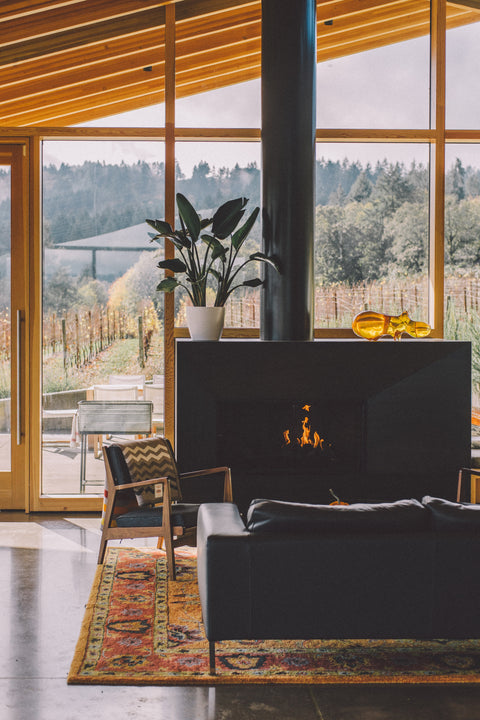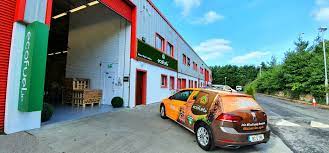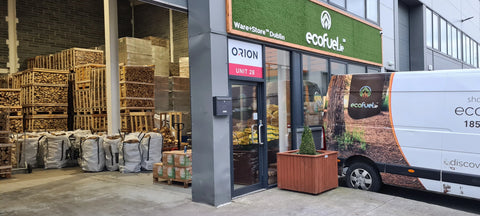
In recent years the title of ‘Wood Fired Pizza’ has become a badge of quality for the pizza industry and a sign of authenticity. A nod to the traditional Italian techniques that have made pizza a staple of the fast-food industry. What do we know about the oven that drove the disc-shaped deliciousness to it’s top tier status?
Where Did The Wood Fired Oven Come From?
The first iteration of a wood-fired oven can be seen by the Egyptians over 5,000 years ago. A clay pot would be placed upside down over the hearth until hot, and the dough would be placed inside to cook from the radiant heat that surrounded it and thus the oven was born. Grecians took this concept and developed it to what we recognise as the modern oven. By placing the pot on its side, it became a more practical tool and used less fuel to cook. Shortly after, the design evolved again when an oven floor was built to house the fire underneath, and the cooking chamber was moved to waist level to make it easier to access. However, what Egyptians invented and the Grecians perfected, became famous through Roman dispersion.
The wood-fired oven in its various forms can be seen throughout the Roman Empire but what we now recognise as a wood-burning pizza oven hasn’t progressed much since the 1st century. Remains of bread ovens in Pompeii dating back to 79AD can be seen in the ruins of the city today. The terracotta floors, clay insulation, and interior dome shape are all critical features of what we have come to see as the visual markers of a great wood-fired pizza oven.

Ovens In Pompeii. Source: www.FornoBravo.com
Wood Fired Ovens: The Basics
Cooking in a wood-fired oven is a world apart from cooking in your kitchen oven or even a standard commercial kitchen. There are subtle nuances that you come to know as you become more familiar with your oven instinctively. For a deep dive into understanding and loving your oven, we can’t recommend watching everything on The Wood Fired Oven Chef’s YouTube channel enough. His videos are incredibly informative, very relaxing, and will make you want to get to work on a wood-fired garden oven for yourself ASAP!
However, until you get around to checking this out, let us go over the basics with you now. First things first: there are two types of the oven; a black oven and a white oven. A black oven is called so because of the soot that collects on the walls of the cooking chamber, turning them black. These smoke stains will usually burn off as the oven reaches higher temperatures (approximately 370°C). A white oven is generally gas-fired as opposed to wood burning. The absence of wood fire means smoke and soot isn’t produced and therefore doesn’t stain the walls keeping them white. These ovens are either made from brick or refractory (heat resistant) concrete and shaped into a dome. The dome structure is used in these ovens because they are the most efficient means of storing and releasing heat. A well-insulated oven is essential to your wood-fired oven as it will retain heat better and also reduce your fuel consumption.

Source: www.mannafromdevon.com
The wood-fired oven cooks using all methods of heat dispersal; Radiant, Conduction, and Convection. Radiant heat occurs from the heat produced by the fire itself and the heat that is being released from the dome. Conduction heat is stored in the floor of the oven and is transferred through direct contact. This could be directly into a pizza placed on the floor of the oven or through cooking utensils such as cast iron pans or griddles. Convection heat comes from the air being drawn into the oven through the door and circulating throughout the cooking chamber. The temperature of your oven can vary massively depending on positioning and proximity to the fire. Directly beside your fire will be the hottest (in the region of 400-500°C), while the area closest to your oven door can be up to 160°C colder. The position of your food in the oven dome will dictate how quickly it cooks.
Essential tools for cooking with your wood-fired oven include heavy-duty gloves, wire brushes, and of course, the peel. Wood-fired oven temperatures are considerably hotter than your standard oven at home, so you need more than your regular oven gloves for working with it. Welders gloves are recommended for loading wood into the fire and stoking the flames and embers due to the immense heat. Also, they will not only protect your hands but also forearms from any possible injuries. Welder gloves can withstand temperatures between 260-500°C. Long-handled and handheld wire brushes are essential for keeping your oven clean, so the embers and ashes are not getting on food while cooking. Using anything other than wire brushes will result in the bristles melting upon contact with the oven floor. Now to the peel. The peel is an essential tool for wood-fired oven cooking regardless of what you are cooking. The Wood Fire Oven Chef calls his long-handled peel this ‘Excalibur’ for all cooking purposes. Traditionally a peel is used for pushing bread and pizzas into the body of the oven and getting proximity to the fire while keeping a safe distance from the heat. It can also be used for stoking the fire and adding fuel during cooking (of course you would need to keep it clean between uses, however!). Other useful tools for using your oven include an infrared thermometer to gauge temperatures of the different floor areas.
Why Cook In A Wood Fired Oven?
The advantages of cooking in a wood-fired oven spread far beyond how cool it is to cook in one (we promise). The immense flavours that come from food cooked in a wood-fired pizza simply cannot be recreated in conventional or gas ovens. The smoky aroma that lingers on the tongue tells you that the food you’re eating has been lovingly crafted more than simply cooked.
Wood-fired ovens can reach incredibly high temperatures. This ability means that you can cook your food much quicker. In commercial wood-fueled pizza ovens, your pie can be prepared to perfection in approximately 2 minutes once it reaches its maximum temperature of 500°C. In comparison, a commercial electric pizza oven could take up to 5 minutes cooking at 250°C. The dome structure of the kiln combined with its traditional clay insulation also allows the oven to retain heat more efficiently, speeding up radiant cooking.
There is an assumption that wood-fired ovens are only for pizza. This couldn’t be further from the truth. Fruits, vegetables, bread, meats, if it can be cooked in a conventional oven, it can be cooked in a wood-fired oven, making them an extremely versatile cooking commodity. Furthermore, the speed of cooking with a wood-fired oven can be a much healthier way of cooking your food. The less time your ingredients spend cooking, the more natural nutrients and antioxidants will be retained for you to consume.
The traditional model of a wood-fired pizza oven is an energy-efficient means of cooking. No electricity or gas is needed to run your oven, which means no non-renewable energies are used in the process of cooking. Your wood-fired oven will run quite happily on a variety of wood or chips (more on this in a moment) that can be sourced from sustainable and environmentally friendly sources, or you could gather and season your wood for further eco bonus points.

What's The Best Type Of Wood To Use?
The best type of firewood to use in a wood-fired oven is only half the battle for optimum cooking. You also need to know what kind of fire products gets the best results. If you’re keeping up to date with some of our other blog posts, you’ll know that hardwoods burn better than softwood varieties due to their lower moisture content. In a wood oven setting, burning softwoods with high moisture content can lead to a build-up of creosote in the chimney and on the walls of your oven which can contaminate your food. In an open fire or stove smoke containing creosote can cause respiratory inflammation; however, ingesting creosote in your diet can cause chemical burns in the mouth or throat in the most severe cases. Generally speaking, we suggest avoiding using unseasoned or green woods or softwood in the coniferous family to prevent unnecessary build-up of toxic fumes from the resin present in the timber.
Hardwoods such as Oak, Ash, Beech or Olive are excellent woods to use in wood-fired ovens. The density of well-dried hardwood releases a lot of energy, meaning that they will burn hotter and longer than your average lumber.
Oak is an excellent choice because of its density. In an oven it won’t be quick to the flame which is good as the embers it produces will last for a long time giving a high but slow heat. It’s excellent for creating a consistent base heat.
While Ash is the king of fireplace wood, it’s not as common a choice for wood-fired ovens as Oak or Beech would be, but it’s still a perfect choice for your oven. The low moisture content and dense wood mean Ash would burn well in a wood-fired oven.
Beechwood is the most popular wood choice in Italy for pizza ovens. Unlike Oakwood, it is quicker to flame, and when it does you get gorgeous lively flames from it while getting a long-lasting burn. We’re a little biased here because we love our Normandy Beech Briquettes for wood-fired ovens. These briquettes are made from compacted Beechwood byproduct which gives them a denser composition than your usual Beech log. This means they burn for longer and better value. Also, their hexagonal shape means they won’t move about in your oven as you cook.
Olive wood is an extremely popular choice for wood fire ovens due to its density but also because the oil in the wood gives a beautiful aroma to the food being cooked in the oven. For this reason, pizzerias are particularly fond of Olivewood; it is, however, not such a common wood choice due to cost and availability. The Olive trees wood is in high demand for furniture, making it one of the most expensive types of wood on the market. Olive wood also takes the longest to dry for burning, and the ideal seasoning period is up to two years. While many industries will use prunings from the Olive tree, the wood quality is not as good as from the trunk.
Wood-fired oven aficionados often swear by fruit trees for oven wood. Apple trees, in particular, are especially famous for their aromatic properties in cooking and gives off a beautiful sweet scent when burning. Other popular fruit tree choices include Pear, Almond, Plum, and Cherry wood.






